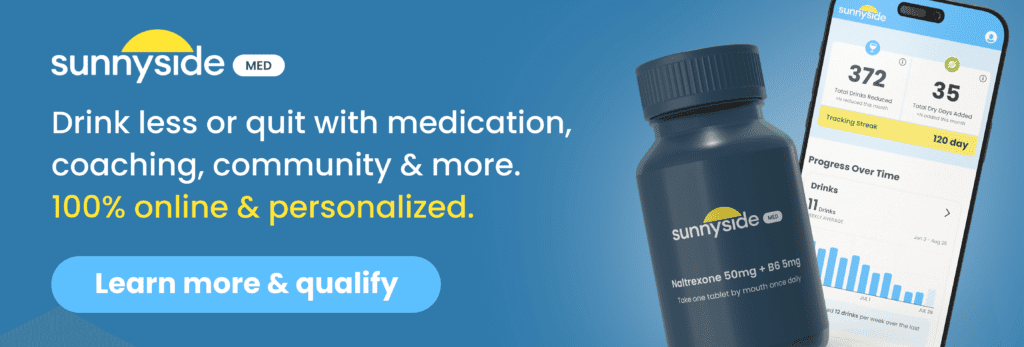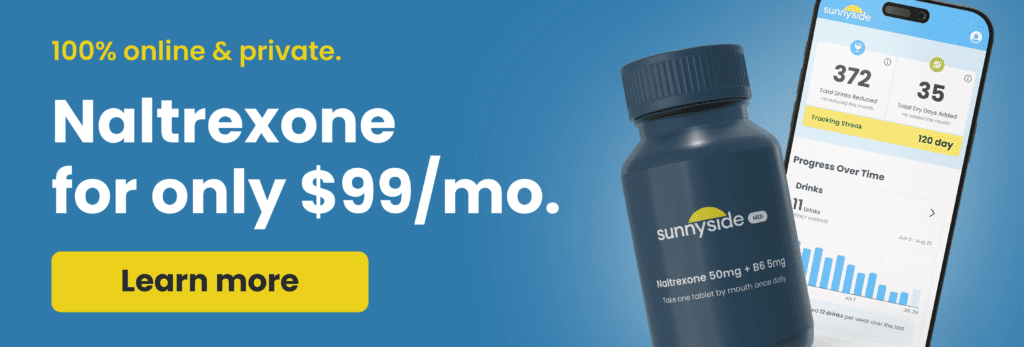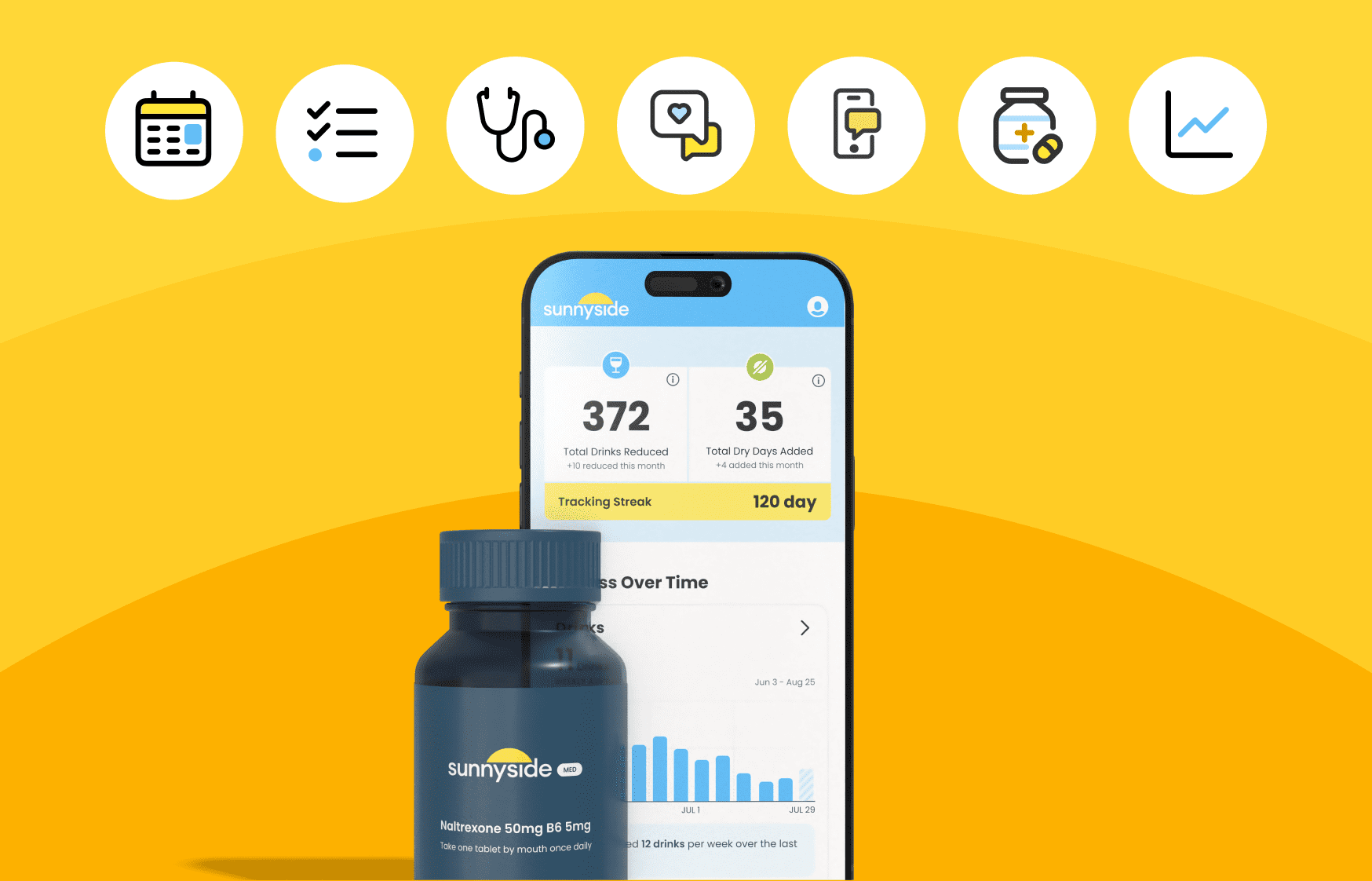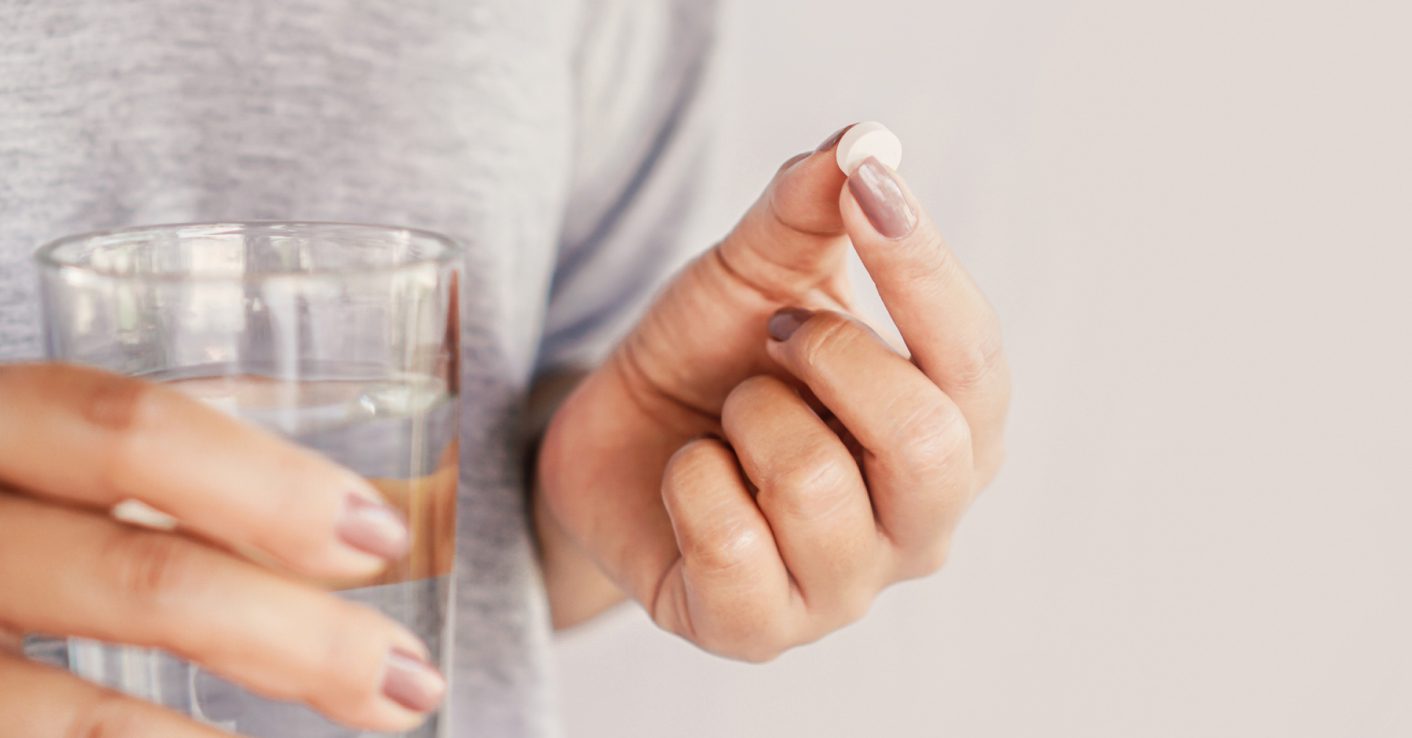Last Updated on October 9, 2025
💡 This article is for informational purposes only and does not constitute medical advice. Always consult with a qualified healthcare provider before starting, stopping, or changing any medication or treatment plan, including the use of naltrexone. Individual needs and responses to treatment can vary.
If you’re considering or already taking oral naltrexone, it’s smart to know how it might interact with other medications, conditions, or substances.
Getting ahead of these can help you stay safe and get the full benefit of naltrexone, especially when it’s part of a healthy toolkit including mindfulness, online or in-person community, and tools like Sunnyside. Below are several important-to-know interactions involving naltrexone—with enough detail so you can talk to your healthcare provider with confidence.

1. Opioids and Opioid-Containing Drugs
What the interaction is:
Naltrexone is an opioid antagonist, which means it blocks opioid receptors in the brain. If you take opioids while on naltrexone, it can prevent the opioid from working and trigger withdrawal if you are opioid-dependent.
Why it matters:
Starting naltrexone when opioids are still in your body can lead to sudden withdrawal symptoms like nausea, sweating, chills, and anxiety. And after stopping naltrexone, your tolerance to opioids may be lower than before.
What you should do:
Be opioid-free for a certain period (often 7 to 10 days, depending on the opioid) before starting naltrexone. If opioids are medically necessary for surgery or acute pain, providers may use non-opioid alternatives or carefully manage timing.
It’s also important to recognize that medicines not traditionally thought of as “opioids” can still contains them. These might include:
- certain cough syrups (like those with codeine)
- anti-diarrheal medications (such as formulations with diphenoxylate or loperamide in higher doses)
- some pain relievers prescribed after dental work or minor surgery.
Even if they don’t look like classic opioid prescriptions, these medications can still trigger dangerous interactions with naltrexone. Always double-check ingredient labels and let your healthcare provider know about any over-the-counter or prescription products you’re using.
2. Other Medications
Several prescription medications are known to interact with naltrexone. Here’s a rundown of some of the more common ones.
Acamprosate
Acamprosate is a prescription medication often used to support people who want to reduce or stop drinking. It works by helping to rebalance brain chemicals disrupted by long-term alcohol use, which can ease symptoms like anxiety, insomnia, and restlessness during early recovery. Unlike naltrexone, which targets cravings by blocking opioid receptors, acamprosate focuses more on restoring stability in the brain’s signaling systems. The two medications don’t have a harmful drug-drug interaction and may even be prescribed together. However, side effects like nausea or fatigue can overlap, so combining them should always be managed under medical supervision.
Disulfiram
Disulfiram is another prescription medication sometimes used to help people reduce alcohol use. It works very differently from naltrexone. Instead of reducing cravings, disulfiram causes an unpleasant reaction, which might involve flushing, nausea, and a rapid heartbeat, if alcohol is consumed. When it comes to interactions, combining disulfiram and naltrexone can place extra stress on the liver, raising the risk of liver damage or elevated enzyme levels. As a result, the two are not commonly prescribed together.
Lofexidine
Lofexidine is typically prescribed to help with opioid withdrawal symptoms such as anxiety, muscle aches, or insomnia. Because lofexidine and naltrexone act in different ways, they can sometimes be used together, but there’s a catch: lofexidine may reduce the effectiveness of naltrexone. This means cravings may not be as well managed when both are taken at the same time.
Central Nervous System (CNS) depressants and sedatives
CNS depressants and sedatives—such as benzodiazepines (like Xanax or Valium), sleep aids, and certain muscle relaxants—can slow down the central nervous system. On their own, these medicines may cause drowsiness, dizziness, or slowed breathing. When combined with naltrexone, the sedative effects can become stronger, making it harder to concentrate, drive, or safely go about daily activities. If you’re prescribed any sedative medication, be sure to tell your provider before starting naltrexone.
What you should do:
Always give your provider a full list of the medications (including supplements) you’re already taking. In some cases, it might be necessary to adjust dosages or monitor your reaction in the early stages.
3. Medical Conditions That Affect Naltrexone
Certain health conditions can change how naltrexone works or increase risks:
- Liver disease: Since naltrexone is processed by the liver, pre-existing conditions like hepatitis or cirrhosis make side effects more likely.
- Kidney disease: Although less common, reduced kidney function can affect how the drug is cleared from your system.
- Opioid dependence or withdrawal: Starting naltrexone too soon can trigger severe withdrawal.
What you should do:
Always be upfront about your medical history so that necessary adjustments can be made if necessary.
Interactions don’t just add risk. They can also reduce how well naltrexone can help you achieve your mindful drinking goals. When treatment goes smoothly and interactions are avoided, you’re more likely to experience reduced cravings and feel supported and stable.

More about Sunnyside and Naltrexone
Sunnyside is a holistic program to help you build a healthier relationship with alcohol, using a proven, science-backed method. Whether you want to become a more mindful drinker, drink less, or eventually quit drinking, Sunnyside can help you reach your goals. We take a positive, friendly approach to habit change, so you never feel judged or pressured to quit.
When you join Sunnyside, you’ll start by completing a 3-minute private assessment so we can learn a bit about you. Once that’s done, you’ll get a 15-day free trial to test out everything, including our daily habit change tools, tracking and analytics, community and coaching, and education and resources. It’s a full package designed specifically to adapt to your goals and help you reach them gradually, so you can make a huge impact on your health and well-being.
In addition, Sunnyside Med now offers access to compounded naltrexone, a prescription medication that can reduce cravings and binge drinking, giving you the peace of mind to make long-term change.
Get your 15-day free trial of Sunnyside today, and start living your healthiest life.



